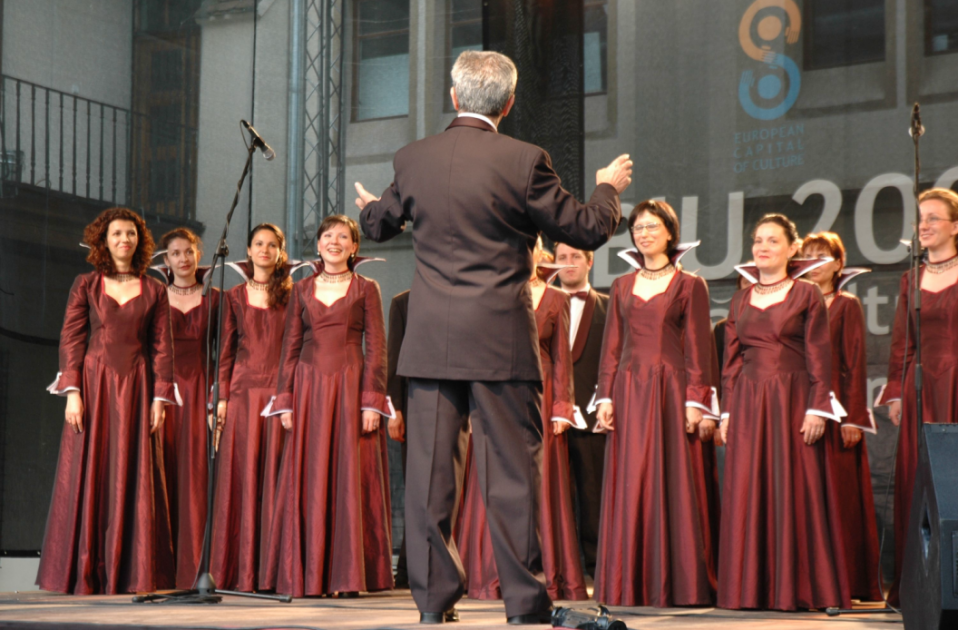Your personal music search space.
Augment your understanding of music.

______________________________________________________________________________

YMUSIC SEARCH ENGINE
Know more about what music listening implies, at the crossroads of hypotheses, opinions and practices
INTRODUCTION TO MUSIC LISTENING
WHY MUSIC? QUALITY ESSAYS ON MUSIC LISTENING FOR AVID READERS

Do you want to discern better how sounds sound through each other to create resonance? Try YMusic, your free personal assistant (it includes musical criteria to select music), you will be able to discover sound through various musical areas and periods!
PERCEPTION AND TRANSFORMATION OF VOICES
Do people love the sound of their voice?
When one note of music is produced in front of listeners, it hits their sound space. When two notes of music reach the same aural field of the same listener, they touch the same space yet they remain distinct; they do not diminish each other: they sound through each other. It can go further: in the same perceptual space, a musical note can enrich another. Then there is a sympathetic resonance.
How can musical notes be in resonance? Between one note and another, one frequency and another or one pitch and another, there is what is called an interval. According to the notes they separate, the various intervals have different names.
One of the sounds most people hear everyday is their own voices. And often they have had the opportunity to hear a recording of their voice. Curiously, a lot of them do not like how it sounds. Why? Physically speaking, when people hear their voice going out of their mouth, they also hear their vocal chords vibrating inside their throat, the external and internal voice mixing. Yet when they listen to a recording of your voice, they only perceive the external one and they feel the result is strange. Happily, over time, all can learn to love their recorded voice.
Music recordings and voice transformation
Music listeners may appreciate various elements in music: chords, melodies and, of course, the voice of a performer. Before being heard by music listeners, singers’ voices are fine-tuned by mixing engineers. Some engineers focus on the technical aspects of a song, other ones are more interested in the musical side of things. In any case, when they are working on a multi-track, they first clean up tracks, getting rid of undesired noise, analyzing the reverberation of vocals, etc. Then, when they know how they want a song to sound, they do the mix itself.
What do engineers do with voices? It depends on each voice they hear. For example, they may want to give some warmth to a powerful voice so that it does not take the head of the listeners off. To obtain the results they want, they mainly play with frequencies, not only to modify the voice itself, but to change elements linked to the material used for each recording. In fact, two recordings of the same song by the same singer may be totally different, because the two)recordings are not made with the same type of microphones, for instance.
Musically speaking, engineers may change a voice to suit a specific context. Thus they will modify it so that it sounds ‘retro’, ‘trendy’, ‘radio-friendly’, etc. That part of their work is more subjective, even if it may be linked to criteria like the music genre or form.

Do you want to attribute a meaning to the musical sounds you hear? Try YMusic, your free personal assistant (it includes musical criteria to select music), especially to discover new types of sounds.


MUSIC AND THE MIND OF THE LISTENER
Do we really perceive music as it is played?
During a music performance, the sounds that performers produce are not the same as what the audience hears, researchers found, talking about musical illusions because listeners perceive elements that are not actually there or they perceive them in a way that does not correspond to the physicality of the sound. A reason explaining this is linked to the fact that it is not possible for performers to control totally the acoustic direction of the musical notes. It is easy to demonstrate with instruments like xylophones.
On a piano, performers use the pedal to reduce that gap in the perception, so the listener is hearing the sound in a more realistic way. More generally, in a live setting, the fact that music listeners may also see the gesture of performers facilitates their perception of sound: for example, they may evaluate the length of a note more easily for specific instruments. What listeners see actually affects what they hear, and performers are receptive to that fact, trying to translate the idea they have in their mind into a precise gesture. They may control the audience in a sense. It is also the case in a music video. That said, listeners can control their listening too: for example they will listen in a different way if they close their eyes.
The mind of the listener
One target of all observations related to sound perception is to know where the music phenomenon is really happening. The music phenomenon begins with the work of the composer and the performer, but each listener is undertaking a mental activity to organize the result in a singular way, based on their unique musical experience and life story.
In that life story, their mother tongue plays an essential part: music researcher Trevor Henthorn found that the way Americans and Englishmen perceive the pitch is different and that it is due to the inflections of their voices. That situation is named the tritone paradox.
Of course, knowing if the listener hears exactly the sound as the performer intended to play it is, in a sense, not the point. In fact, in the mind of the listener, if a piece of music ‘sounds’ good, it ‘is’ good. In the end, music is heard in the mind and the heart of the listener, who is evaluating the music.
Let us notice that mixing engineers contribute to the music listener’s enjoyment: in fact, after sound recording, they are responsible for making the music sound good, accuracy being their best policy. Also, they assure the fidelity of audio equiment (i.e. the high-quality reproduction of sound in order that sound may reach the listener’s ears. They are dealing with noise, frequency response (linked to the treatment of audio signals), and distortion, but also impedance (a phenomenon in the field of electricity related to Ohm’s Law).
Do you want to develop the ability to distinguish the elements that constitute music and enjoy it, whatever your level of musical training is? Try YMusic, your free personal assistant (it includes musical criteria to select music), and improve your skills!
DOES THE QUALITY OF SOUND AFFECT THE MUSIC LISTENING EXPERIENCE?
Listening to music in sound systems: objectivity and subjectivity in sound measurement
Sound specialists were once used to measure sound only in a perfectly objective manner, focusing on the sound itself only. Today, they are interested in learning how listeners perceive sound: for example, soundscape studies include sound walks, where listeners describe a soundscape during a walk. Furthermore tests are run to know how listeners use sound equipment (like speakers and headphones) in order to determine what they prefer.
Generally speaking, listeners may be classified into two broad types: trained listeners and untrained ones. What is a listener? A listener is a person that has the capacities to evaluate the different attributes of sound quality; they can distinguish different styles of signals, etc. Both trained and untrained listeners may select the same sound equipment, but trained listeners do it following sound criteria rather than advertising campaigns.
Which types of music listeners are in the best position to evaluate sound quality?
Professional musicians, who are trained at the level of musical forms, are more analytical than untrained ones, as they locate the different elements that constitute a piece of music: they rarely get completely lost in the music. It is why they are not necessarily the best subjects when it comes to audio tests. On the other hand, the degree to which listeners enjoy sounds does not affect the quality of their sound perception, thus being untrained is not an advantage in itself.
In that case, what is the solution? It is necessary to combine the two approaches of sound measurement: the old approach, centered on sound itself, and the new one, taking information about the listener into account. In fact, the higher the sound quality is, the more listeners will be able to distinguish the elements that constitute music and enjoy it, whatever their level of musical training is.
Enhancing the quality of sound: the role of sound engineering
Now, time is a main factor, it allows the development of personal ability to evaluate sound quality. Music platforms try to acquire technologies that enhance the listening experience and they compete by buying the best audio equipment to broadcast sound. Companies specialized in the field are their providers. In these companies, sound engineers are the ones who know how to produce the best sounds. They know that human hearing is not absolute: just because an ensemble of notes put in a specific musical context sounds good that does not mean that it will sound right put into another musical environment. In fact, sound has, naturally, a tendency towards distortion: when it is transferred from one device to another, it may happen that it is modified slightly.
So, the role of sound engineers is essential in the production of high-quality sounds. However, at the end of the day, the more listeners listen to music, the more their listening skills increase and the more they can appreciate the work of both musicians and sound engineers.
Do you want to make a new journey across different musical traditions? Try YMusic, your free personal assistant (it includes musical criteria to select music), and find new sounds pleasant to your ears!
WHERE IS THE BEAUTY IN MUSIC BEYOND CULTURAL BOUNDARIES?
Music listeners and their cultural ties
As the perception of images is related to what onlookers know about the world, sound perception heavily relies on the social and personal knowledge of each music listener. It is one of the reasons why listeners attached to a specific type of music may be puzzled when confronted by music that differs from what they typically like: they generally bring their knowledge and expectations about music to create patterns that are quite different from those that are really there.
So, there is a difference between people regarding the way they may perceive musical patterns, even when these patterns are simple. It is true for pitch (the property of sound that allows us to separate music notes into high notes and low notes): listeners have their own mental representation of the pitch. A music psychologist, Diana Deutsch, explains that their depiction is derived from the sonic speech pattern to which they have been most frequently exposed. It is easy to understand that idea when comparing Western music and Chinese music for example. It is evident that the representation of pitch and other musical patterns is very different in these two types of music and thereby the idea of what is musically beautiful and what is not.
Across different musical traditions
Even if they are strong, it is possible to cross the cultural boundaries between speech and sound. Each year, a lot of popular hit songs are appreciated all around the world: composed on canvas belonging to popular Western music, they often include elements coming from other musical traditions. Furthermore, the increasingly frequent use of electronic instruments to produce them is also reducing the differences between the various musical traditions.
Also, just as people may learn new languages easily, they have the ability to appreciate new musical patterns. As for languages, it takes an investment of time. The more they listen, the more music listeners may understand how to appreciate new music. Music listeners investing time in a new genre, a new period, a new music, are co-creating music listening with composers and performers.
Investing time in new music
Investing time in a new piece of music means listening to it more than once. Music listeners are said to be ‘hooked’ once they have learnt to like a piece of music. It happens more often with popular music, where pieces are shorter than in classical music while repetitions in them are more numerous. That ‘hook’ effect is thus simple: a piece of music is more catchy when it includes repetitions of musical elements that sound pleasant to numerous listeners: it may be a guitar riff, a melody, etc. Now the presence of a hook in a piece of music does not necessary mean the piece is more artistic, but that is another matter. In any case, the more they listen to a piece of music, the more music listeners will be able to locate and enjoy the multiple elements that they find pleasant in a piece of music.

Do you want to give a chance to music totally new to you? Try YMusic, your free personal assistant (it includes musical criteria to select music), and enjoy music!
WHAT DOES MUSIC OFFER TO LISTENERS?
Music to forget the world or to experience satisfaction?
As music is defined in various ways by different types of people, and as it means different things to the same people at different periods of their lives, it would be very difficult to confine music listening to one single method, conductor Daniel Barenboim says. Also, there are different ways to approach music: the intellectual level and the emotional level, for example.
Examining the emotional level, which is the one in relationship with human states of mind, it can be seen that music listeners may take one of the following attitudes: they may listen to music to forget painful events in their lives, to soothe their regret or to mourn; on the contrary, they may use music for their growth, their enjoyment or their interest. There is nothing wrong with listening to music to forget the world and all sorts of unpleasant things. However, fundamentally, great composers did not write music for this purpose.
Giving oneself to music
What does music offer? What can listeners do in order to get benefits from it? Music offers pleasure. Even when music is written to express sorrow, as it is in the case of a funeral march, it is possible to enjoy it: performers can enjoy it and listeners too. Why? Because music is a great way to look at reality in another light and, in doing so, in a qualitative way.
Music through sound being a great introspective art, listeners who focus only on music while listening to it will get the most of it. Taking some seconds of silence before starting to listen may be useful too, helping to hang out to anticipate the first notes of a piece. Listeners who have the will to attach themselves to the music with their ears will appreciate it more, because they give themselves to it. Exactly in the same way as they may give themselves to another human being. And, like in human relationships, what one receives is often much more than what one gives.
Enjoying new music?
Most music listeners depend on media and online services to discover music and, if curation websites and platforms give them access to lots of music and opinions, they are often scarcely able to guide them to music that is totally different from what listeners already know; it is not their primary target. One result is that classical music listeners may stay classical music listeners for their whole life, without being steered towards anything else; and it is the same for rock music lovers or pop fans.
What is the point of overcoming the idea of musical genres? Perhaps each musical genre is a specific lens to explore the feelings that music instils in listeners. However, that approach is limited, because the same emotion can be expressed through various musical genres, and one can find similar sounds in music genres that are apparently very far away from each other. That is why suggesting music to listeners outside of their usual musical sphere, beyond any genre is a plus: they get a chance to listen to music for itself, overcoming the cultural aspects of music.
WHAT DOES MUSIC OFFER TO LISTENERS?